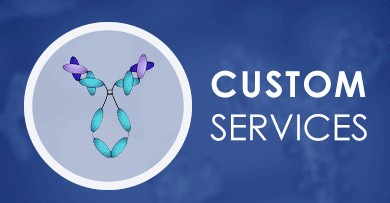+ Filter
 Loading...
Loading...

CPS1
 Loading...
Loading...Anti-CPS1 Products
- Recombinant Mouse Anti-Human CPS1 Antibody (MOB-0728MZ)
-
- Species Reactivity: Human
- Type: Mouse antibody
- Application: IHC-P
-
- Derivation: Mouse
- Species Reactivity: Human
- Type: Mouse IgG1, κ
- Application: WB, IP, IF, IHC, ELISA
- Rabbit Anti-CPS1 Recombinant Antibody (clone JB40-33) (MRO-0385-CN)
-
- Species Reactivity: Human, Mouse, Rat
- Type: Rabbit IgG
- Application: WB, IF, IHC, IP
- AbPlus™ Anti-CPS1 Magnetic Beads (VS-0724-YC117) (VS-0724-YC117)
-
- Target: CPS1
- Target Species: Human
- Application: IP, Protein Purification
- Anti-Rat CPS1 Immunohistochemistry Kit (VS-0525-XY1642)
-
- Species Reactivity: Human, Mouse, Rat
- Target: CPS1
- Application: IHC
- Anti-Human CPS1 Immunohistochemistry Kit (VS-0525-XY1640)
-
- Species Reactivity: Human
- Target: CPS1
- Application: IHC
- Anti-Mouse CPS1 Immunohistochemistry Kit (VS-0525-XY1641)
-
- Species Reactivity: Human, Mouse, Rat
- Target: CPS1
- Application: IHC
- Anti-CPS1 Immunohistochemistry Kit (VS-0325-XY526)
-
- Species Reactivity: Human, Mouse, Rat
- Target: CPS1
- Application: IHC
-
- Derivation: Phage display library
- Species Reactivity: Human
- Type: Rabbit IgG
- Application: WB, IHC, ICC, IP
View More Products
Can't find the products you're looking for? Try to filter in the left sidebar.Filter By Tag
More Infomation
Our customer service representatives are available 24 hours a day, from Monday to Sunday. Contact Us
For Research Use Only. Not For Clinical Use.
Background
CPS1 (Carbamoyl-Phosphate Synthase 1) is a Protein Coding gene. Diseases associated with CPS1 include Carbamoyl Phosphate Synthetase I Deficiency, Hyperammonemia Due To and Pulmonary Hypertension, Neonatal. Among its related pathways are CDK-mediated phosphorylation and removal of Cdc6 and Arginine biosynthesis. Gene Ontology (GO) annotations related to this gene include calcium ion binding and phospholipid binding. An important paralog of this gene is CAD.
Protein class
Disease related genes, Enzymes, FDA approved drug targets, Human disease related genes, Metabolic proteins, Plasma proteins
Predicted location
Intracellular
Single cell type specificity
Cell type enriched (Hepatocytes)
Immune cell specificity
Not detected in immune cells
Cell line specificity
Cell line enhanced (HeLa, SiHa, SK-BR-3)
Interaction
Can form homooligomers (monomers as predominant form and dimers).
Molecular function
Allosteric enzyme, Ligase
More Types Infomation



